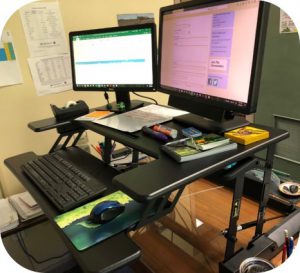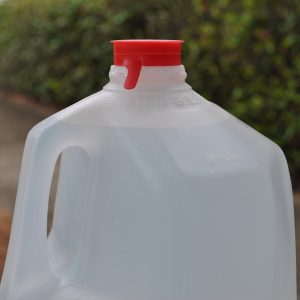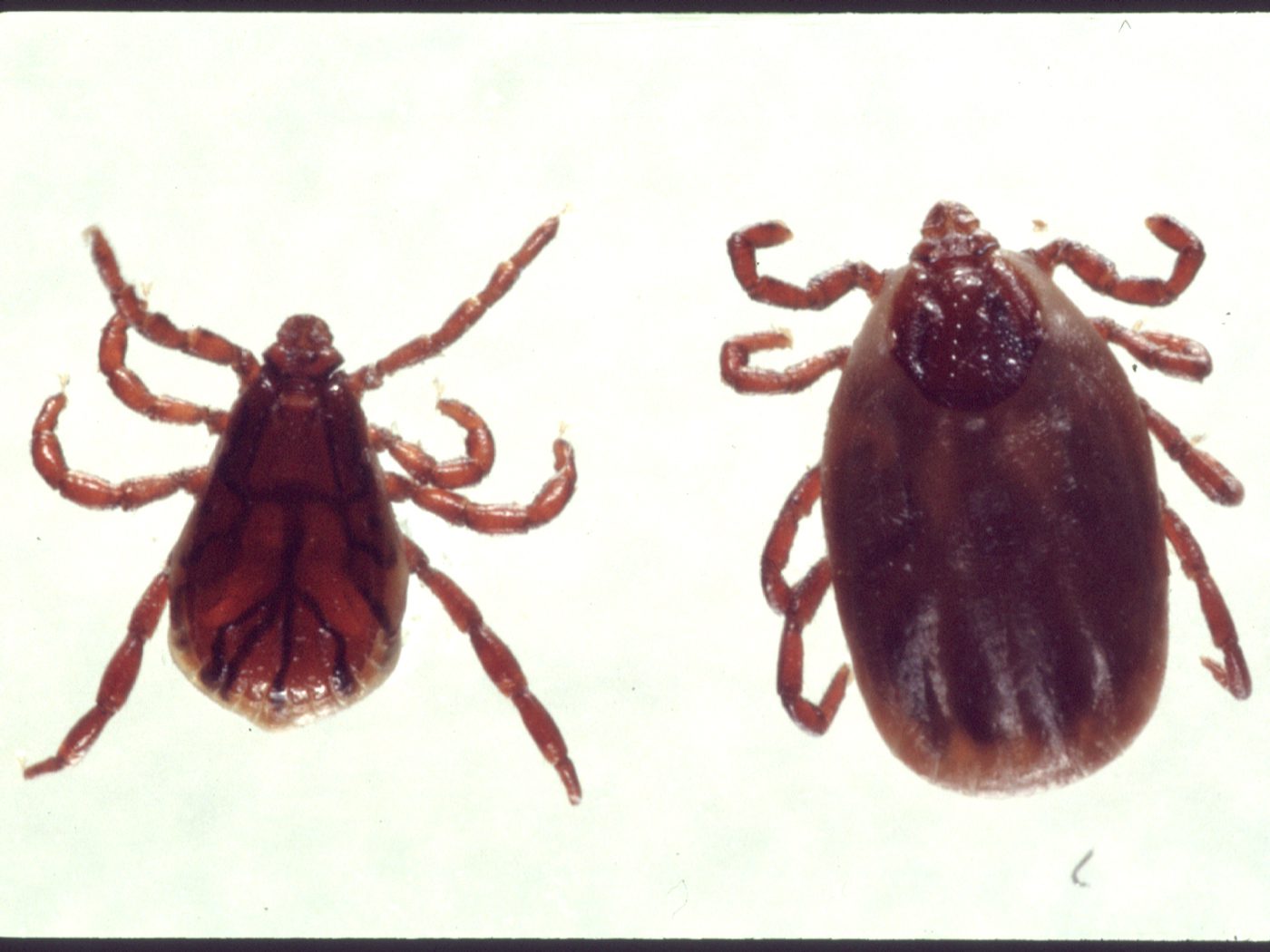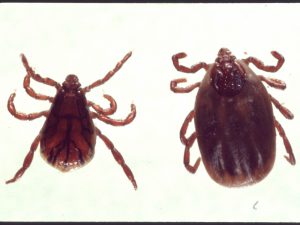
by Dorothy C. Lee | Jul 30, 2018

Instant Pot settings display. Photo source: Wendy Meredith
An Instant Pot Pressure Cooker is a small electronic multi-cooker appliance that can function as a pressure cooker, slow cooker, rice cooker, steamer, warmer, and more. It is often referred to as an Instant Pot. It is currently the hottest trend in home cooking.
An Instant Pot Cooker can prepare just about any type of food you can imagine. Poultry, beef, and pork recipes, soups, stews, bread, and even desserts.
Considering today’s fast paced lifestyle the Instant Pot is a time saving kitchen helper. Spend a few minutes preparing the recipe ingredients, program the Instant Pot and relax. The Instant Pot cooking method takes the stress out of long cooking times and of meal preparation.
Instant Pot cookers are available in a variety of sizes, styles, and functions. The function of an Instant Pot is based on the model purchased. Many brands are available. Basic functions present in most models consist of slow cooker, pressure canner, steamer, rice cooker, yogurt maker, egg cooker, sauté or browner, and warmer.
When purchasing a multi-cooker consider the usage and quantity of food to be prepared. A 3-quart cooker is just the right size for single servings. Family sizes are available as 6-quart (4-6 servings) or 8 -quart (6-8 servings).
The benefits of an Instant Pot cooker are numerous. No need for constant or frequent stirring, no worry about overcooking or burning, saves energy based on quick cooking times required for recipes and less small kitchen appliances needed for preparation.
Traditionally beef stew and less tender cuts of meat take hours of cooking to render tender. The Instant Pot Cooker dishes up these delicious dishes in under an hour.
Corned Beef Cabbage*
2 pounds corned beef
2 cups chicken broth
2 cups water
3 bay leaves
8 peppercorns
¼ cup apple cider vinegar
8 medium red or white potatoes
8 cups coarsely sliced cabbage
Place beef in cooker. Add stock, water, bay leaves, peppercorns, and vinegar in cooker. Cook for 90 on meat/stew setting. Remove corned beef. Add vegetables; cook on high pressure for 4-5 minutes.
*Follow directions listed on Instant Pot instruction manual for programming cooker.
Instant Pot cooking is easy, economical and quick.
Recipe adapted from Cooks’ Essentials.

by Heidi Copeland | Jul 26, 2018
Have you ever read the book Something from Nothing, by Phoebe Gilman? It is a wonderful story, with a sewing theme, of sewing/creating something beautiful over and over again. My fervent hope is that the 4-H sewing camp participants feel the same way about all of their creations generated during sewing camp!
Recently, the Tallahassee Chapter of the American Sewing Guild (ASG, part of a national, non-profit organization dedicated to the art and love of sewing) generously volunteered their time, talent, and supplies to enrich the experience of every 4-H sewing camp participant.
The ASG philosophy, coupled with the 4-H history of helping youth “learn by doing” is a good fit. Both organizations focus on teaching new topics and life skills development through experiences thus enhancing self-confidence through skill building.
In today’s world, sewing is seemingly no longer a necessity. Sewing can even be expensive! But, can we put a price on self-confidence or creativity, sustainability or even a life skill?

4-H Sewing Campers Photo source: Heidi Copeland
Think of all the things learned while sewing. Sewing helps teach:
- Finger dexterity and the development of fine motor skills.
- The value of patience.
- Systematic following of directions – both verbal and written.
- Creativity!
- Vocabulary as well as techniques.
- Pride in accomplishment for a job well done!
Moreover, sewing truly integrates science, technology, engineering, art and math (STEAM). And it is FUN! Campers:
- Learned first-hand about fibers (science).
- Experienced technology using various sewing machines and equipment – some even computer driven.
- Became adept at trouble shooting their own machine repair (engineering).
- Artistically bedazzled their creations.
- Utilized practical applications of many mathematical concepts to measure and sew as well as critical thinking and problem solving.
The 4-H Club pledge says, “I pledge … My Head to clearer thinking, My Heart to greater loyalty, My Hands to larger service and My Health to better living for my club, my community, my country, and my world”. ALL of the campers contributed to a community service project sewing a pillowcase destined for the Early Learning Coalition of the Big Bend Read a Child to Sleep campaign. This fostered the idea that empathy, sharing, nurturing relationships and giving is important too.
Sewing certainly did not stop when camp ended. A budding entrepreneur posted on Facebook she is taking orders for her creations while another camper is helping a local theatre group fashion costumes to obtain her community service hours fulfilling a high school graduation requirement.
There is no better feeling than the pride of accomplishment. Sewing campers learned by doing and while they were at it learned a skills they will carry throughout life.
To find out more about the American Sewing Guild: https://www.asg.org/
To find out more about Leon County 4-H programs: http://leon.ifas.ufl.edu/4h
If you are interested in learning more about 4-H, go to florida4h.org.

by Amy Mullins, PhD, RDN | Jul 26, 2018

Get out of your chair. Photo source: Amy Mullins
Have you ever thought about how many hours a day you spend sitting? Sitting at your desk, sitting in front of a computer, sitting watching television, sitting in the car, sitting, sitting, sitting. On average, Americans sit approximately 13 hours a day and sleep 8 hours adding up to a whopping 21 hours of inactivity. All of this sitting around may in fact be shortening our lives.
The cumulative effect of daily inactivity, or sedentary time, has contributed to a nationwide crisis of escalating chronic health conditions that include obesity, heart disease, high blood pressure, stroke, certain cancers, and type-2 diabetes. According to research, including a 2014 Harvard study of over 92,000 women, the risk of dying from stroke, heart disease, and cancer increases with the more time spent standing. In addition, the negative effects of excessive sitting seem to be just as strong in people that participated in a regular exercise regimen!
Standing Has Many Benefits
Our bodies increase a fat-burning enzyme called Lipoprotein Lipase when muscles are activated. This doesn’t just happen during purposeful exercise, but even during periods of standing. In fact, standing burns 30% more calories than sitting still! Regular engagement of muscles keeps them in a more continuous metabolic state that helps improve blood cholesterol, blood pressure, and blood sugar levels. Regular intervals of standing with minimal movement does all of this and so much more:
- Improves posture
- Tones muscles
- Increases blood flow
- Improves metabolism
- Improves mood
- Increases mental energy
- Reduces fatigue
During a typical day at work, experts recommend not sitting for more than 20 minutes at a time with regular intervals of standing. Standing up and walking even for just 5 minutes can lift your mood, increase mental energy and productivity, and can even dull your urge for unnecessary snacking.
What You Can Do

Standing desk. Photo source: Amy Mullins
Get up and move more! Consider some of these ideas to help in your quest to be more active during the day:
- Create a culture of health and encourage others in your workplace to support one another.
- Purchase a “standing desk” or get creative and make one to meet your needs
- Use a smartphone app, wrist monitoring device (such as a FitBit), or just an alarm on your phone or desktop to remind you to stand up and stretch or to walk outside for some fresh air.
- Instead of emailing or calling a co-worker, get up and take a stroll down the hall.
- On a conference call? Stand, move, stretch, do squats or desk push-ups.
- Take the stairs as often as you can.
- Forget hum-drum meetings in the conference room! Get creative on your feet and schedule walking meetings.
- Skip the afternoon coffee and energize with some office exercises. Consider getting an exercise mat, resistance band, stability ball and light weights.
- Wear comfortable shoes and clothing to the office and enjoy part of your lunch break taking a brisk walk and/or stretching.
- Bring your own reusable bottle to work and drink more water throughout the day. More water means more times you’ll have to walk to the restroom!
It’s not easy to create positive habits, but your health is worth it. But, making even a few changes to your normal routine can put you on a path to a happier and healthier life. For additional information about healthy habits in the workplace, visit:
NIH U.S. National Library of Medicine
U.S. Division of Occupational Health and Safety
CDC Workplace Health Promotion
University of Michigan Computer Ergonomics
by Samantha Kennedy | Jul 25, 2018

Commercially bottled water is a great choice for your emergency water supply. Store the bottles in a cool, dry place and have enough water on hand for each person (including pets) to have 1 gallon of water per day for 7 days. (Photo source: Samantha Kennedy)
Hurricane season is in full swing and will last through November 30. If you have not prepared your emergency supply kit, now is the time, BEFORE a hurricane is imminent.
The most important item in your emergency supply kit is clean drinking water. Clean water is essential for drinking, cooking, and basic personal hygiene during and after an emergency event.
You may stock up on clean water in one of two ways: by purchasing commercially bottled water from the supermarket, or by bottling it yourself.
If you purchase commercially bottled water, take heed of the use by date. While water does not spoil, per se, the quality of the water can diminish over time. The bottles may also start to break down as well, causing leakage or contamination. It is recommended to replace your emergency drinking water supply each year to maintain optimal safety and freshness.
Bottling your own water takes a little more effort, but can be just as safe as and will cost less than buying it commercially. Choose the proper containers. Glass may be sturdy, but it is heavy and can break, so use it sparingly. Plastic two-liter soda bottles and gallon-sized water jugs are ideal for storing water. Only use food-grade plastic containers and not containers previously used for chemicals such as bleach.
Sanitize the containers with a solution of 1 teaspoon of bleach per quart of water. Rinse the containers with clean water after sanitizing. Once the containers are filled with clean water, seal them with tight-fitting caps, label them as drinking water along with the bottling date, and store bottles in a cool, dry place.
Be sure to follow all boil water notices, especially if your water comes from a municipal source. If you get your water from a private well and are uncertain whether it is contaminated, it is better to err on the side of caution and boil water vigorously for 3 to 4 minutes before using it.
Boiling water is the most effective way to kill harmful bacteria that may be present. However, another effective means of purifying water is by adding bleach to the water. The type of bleach is important. Only use 5.25% household bleach free of perfumes, dyes, and color-safe or other additives. Eight (8) drops of bleach per gallon for clear water or 16 drops per gallon for cloudy water are the recommended amounts for effective purification.
How much water should you store in your emergency supply kit? At a minimum, one (1) gallon per person (including pets) per day for at least seven days is the recommended amount. This should be enough for drinking, food preparation, and basic personal hygiene. You may want to store more water as a precaution, if necessary.
For more information about preparing an emergency water supply, please refer to the UF/IFAS publication Preparing and Storing an Emergency Safe Drinking Water Supply.

by Angela Hinkle | Jul 11, 2018
The pickin’ is plentiful and life is good. Now is the time to take advantage of summer’s bounty. Summer produce is colorful and healthy. It tastes amazing. And right now, it’s everywhere!
Fruits and Veggies in Season
Buying summer produce now means you get fruits and vegetables that taste their best. See Panhandle Produce in Season for what’s in season in the Florida Panhandle. Because this is the easiest time to grow them, they also cost less than at other times of the year. You also may get to learn more about where your food comes from. This is a great time of year to buy local. Speaking of which…

Visit a U-Pick farm for fresh, local produce.
Photo source: Alex Hinkle
U-Pick Farms
When’s the last time you or your kids picked your own food? U-Pick farms are a great way for the whole family to enjoy the outdoors. (Hint: for max comfort and safety, go in the earliest/coolest part of the day.) Picking from a U-Pick helps you get delicious food at a good price. It also helps local businesses thrive. You can meet the local farmers in your area. You usually can get easy, tasty recipe ideas and you can even make new friends. (Working to pick your own food also can make you appreciate how hard it is to have the job of farmer.) To find the closest U-Pick farm in your area, contact your local UF/IFAS Extension Office.
Save Some for the Colder Months
Whether from a U-Pick, farmer’s market, or grocery store, sometimes you just can’t eat all that great produce right now. What to do? Canning or freezing are excellent options. For information on freezing vegetables, see UF IFAS Freezing Vegetables. For fruits like berries, rinse berries well and let them dry on paper towels. Place in plastic zippered bags and freeze. Then just take out the amount you need for blueberry muffins in January – Yum! Or if you live in the South, it’s easy to make cold smoothies in the blender any time of year.

Fresh-picked blueberries are perfect in smoothies and salads.
Photo source: Alex Hinkle
Half MyPlate
The USDA (United States Department of Agriculture) recommends half of your plate be fruits and veggies. Eating in this way gives your body the nutrients it needs to get healthy and stay healthy. Vitamins, minerals, water, and fiber are packed into summer produce. Eat a variety. Try produce in every color, texture, shape, and size. To pack a tasty, healthy wallop for your next meal, make a hot multi-veggie hash alongside a cold refreshing fruit salad. For more ideas on how to add more fruits and veggies into your day, go to Liven Up Your Meals with Fruits and Veggies.
Summer’s Bounty – get it now, enjoy it now!

by Laurie Osgood | Jul 11, 2018

Check for ticks after being outside.
Photo source: http://photos.ifas.ufl.edu
Does the mere thought of ticks make you feel itchy all over? Ticks are not a fun thing to talk about, but we can’t ignore them. Ticks can pose a real threat to your outdoor summer fun. Here in the Florida Panhandle, you can find ticks all year-long. But ticks are the most active in warm weather, from April through September.
There are many varieties of ticks in the world, but only a few spread disease to people. Of the ticks that can be found in North Florida, the black-legged tick, also known as the deer tick, is the most dangerous because it is the primary vector of Lyme disease in humans. Learn more about the black-legged tick.
Symptoms of a Tick Bite
According to the UF/IFAS Extension’s Department of Entomology and Nematology guidebook, Pests In and Around the Southern Home, the most common symptoms associated with tick bites are rash, fever, chills, aches, and pains. If you have been bitten by a tick that carries Lyme disease, a bullseye-shaped rash may appear within 3-30 days. This circular rash usually appears before you experience fever or any other symptoms.
Although the rash tends to show up in most Lyme disease cases, it doesn’t always develop at the spot where you were bitten. If you’ve been bitten by a tick and are suffering from any of these symptoms, you should contact your doctor ASAP. They will evaluate the tick bite and decide the best treatment option for you. However, in most cases, when the tick is removed, these symptoms should subside within 24 hours. For more information, visit Ticks & Disease in Florida.
Checking Yourself and Your Family for Ticks
Ticks can be very small and hard to see. It is important to routinely check for ticks on all members of your family, including your pets. Examine your clothes, gear, and pets thoroughly after spending time outside. Experts advise us to wear light-colored clothing and closed-toe shoes when outside. Make sure to check your legs and ankles first, then move up your body. It’s important to remember that ticks are especially fond of warm areas on the body, so don’t forget to check all head and body hair, under your arms, the inside and outside of your ears and inside your belly button. Use a hand-held mirror for the best view of these spots on your body.
What is the Safest Way to Remove a Tick?
If you find a tick attached to your skin, don’t panic! It is important to remove the tick as soon as you spot it. The best way to remove the whole tick is with a pair of tweezers. Avoid twisting or yanking on the tick too quickly; this may cause some of the tick to remain attached to your skin. After removing the tick, thoroughly clean the site with soap, water, and rubbing alcohol.
Some believe the best way to remove a tick is by coating it with nail polish or petroleum jelly, causing the tick to detach itself from the skin. However, tweezers remain the quickest and safest way to remove the entire tick that is attached to the skin.
Preventing Ticks in Your Yard and On Your Pets

Check pets regularly for ticks.
Photo source: Pam Nobles
Our own backyard can be high-risk tick zones. We can help rid our yards of ticks by removing old trash and excess leaves, clearing tall grass, and mowing the lawn frequently. This is important especially around walkways, gardens, and the areas used for family activity.
Once you have protected your yard from ticks, don’t forget about your family pet. Adult ticks can attach themselves to your pet, who, unknowingly, bring these pests into your home. Once inside, they can easily spread disease to you or your family. You can defend your pets from these nuisances by talking to your veterinarian about the tick protective products they recommend for your pet.
To learn more about ticks and tick bites, visit the Centers for Disease Control’s (CDC) website for a comprehensive guide to all tickborne diseases in the United States.













